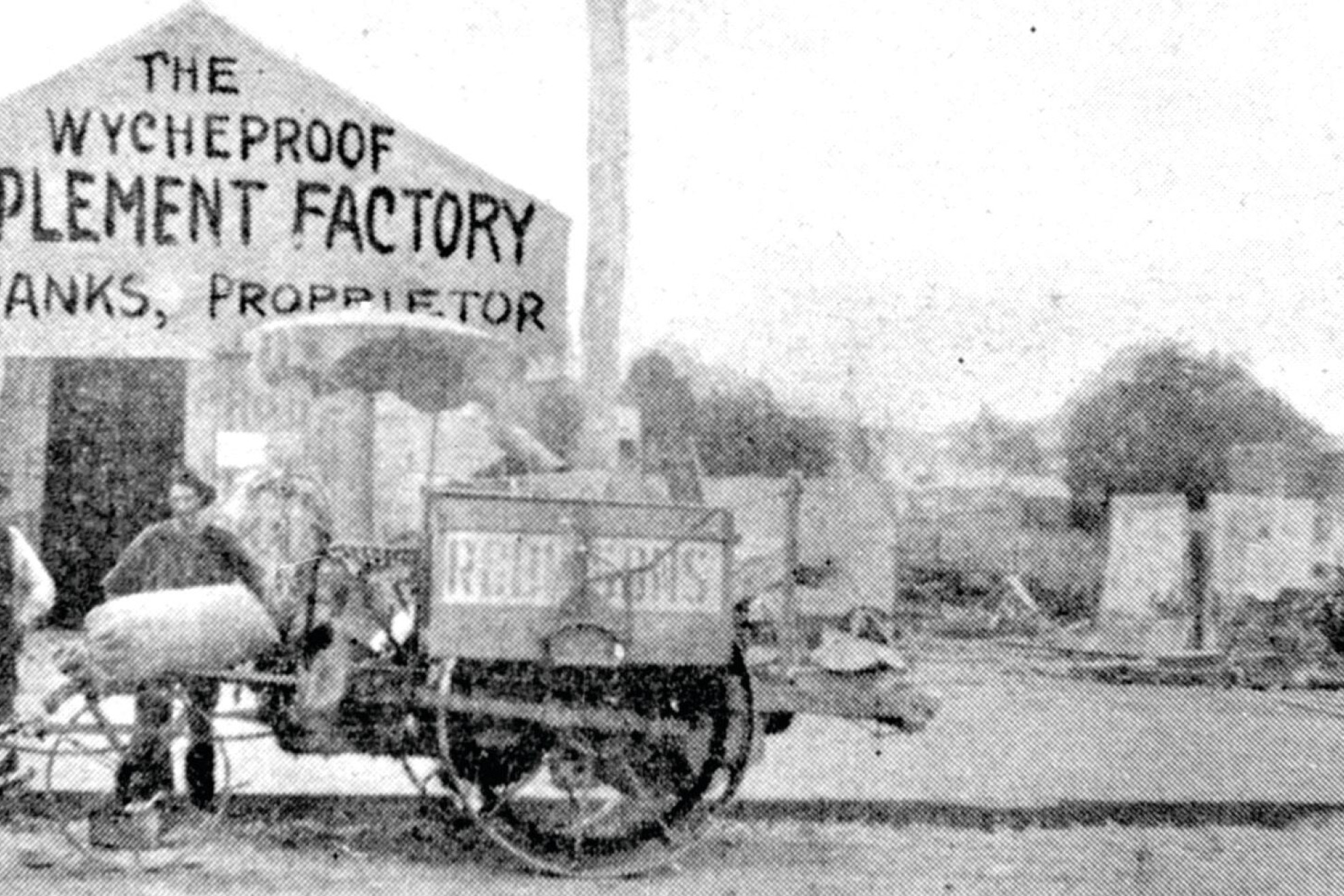Agriculture
13 January, 2024
Summer reading: A harrowing story
Loddon Herald history writer KEN ARNOLD shares an excerpt from his latest book Wycheproof & District The Way it Was RALPH Storey was born England in 1834 and would emigrate around 1861. eventually selected land on the Loddon River prior to...

Loddon Herald history writer KEN ARNOLD shares an excerpt from his latestbook Wycheproof & District
The Way it Was
RALPH Storey was born England in 1834 and would emigrate around 1861. eventually selected land on the Loddon River prior to moving to Shingle Hut around 1880.
His first wife died around 1870. Storey remarried there being eight children, son Charles died in Ballarat around June 1, 1909 whilst two daughters had predeceased him when he died on March 6, 1918.
Storey was survived by his widow Elizabeth, sons Ralph, George and John, also a blacksmith, and two daughters.
Charles, born 1862, formed a brief partnership with Stanley James Burge, at Bridgewater, which was dissolved.
Soon after January 1890 as C. Storey, Wycheproof, he was awarded first place for his double furrow plough at Mt Wycheproof Agricultural show in September 1890.
Storey was manufacturing two, three and four-furrow ploughs, all steel scarifiers, seed harrows, Mallee stump jump harrows, scoops, wagons and drays at his Wycheproof Implement Works by March 1891.
He was also an agent for the Braybrook Implement Co. Ltd., Cliff & Bunting, Hutcheson & Walker and A. Cockburn.
Storey was awarded prizes in the vineyard ploughs and scarifier class, and possibly for a wagon and a seed sower at the Grand National hosted by the Bendigo Show in October 1892.
As William Kirk had closed his Wycheproof Coach Factory he placed his stock with Storey, for realisation in April 1893.
In March 1894 Storey was advertising his steel shear covers as a saving on malleable shear sockets.
During March 1896, Storey was advertising his improved Mallee disc as the best. His advertisements claim he was the first to introduce wooden bearings and swinging forks and also to hang disc bars in the centre, thus avoiding rigidness.
His swing forks and wooden bearings could be attached to any make of disc.
By October 1897 Storey was making strippers and winnowers however his business was soon in trouble money wise thus an assigned estate auction was conducted for Charles Storey, blacksmith and agricultural implement maker, on September 7, 1899.
It was not long after the assigned estate auction that the Wycheproof Implements Works, Charles Storey manager, began trading from the old nearby Kirk’s coach factory in the October.
It is recorded that “Chunda Adams” began manufacturing five and six furrow ploughs in the former Storey factory but it is unclear in which building and for how long.
Raphael John Gartner and Stephen Henry Watts formed a partnership, as blacksmiths, at Berriwillock, they trading as Gartner & Watts until Gartner purchased the interests of his partner around June 1896.
Gartner, a wheelwright, moved to Wycheproof during 1899 where he conducted the Wycheproof Implement Works. His advertising states in the factory lately occupied by C. Storey
By April 1904, Gartner had sold the business to R. “Curly” Burns & Sons but by July 1908 Robert Burns had assigned his book debts to Eliza Tinsley, a Melbourne business.
James Hugh Currie formed a partnership with Arthur Franks to purchase the Burns and Sons business by July 1908.
The Franks and Currie partnership was dissolved in December 1909, Franks to continue the business until he sold to the Dunn family of Carapugna, around September 1912.
But it was not until May 5, 1914 that Franks held a clearance auction as he was leaving the area.
As Richard Dunn was a farrier, blacksmith and wheelwright he had built a twelve ton waggon that was sent to Corowa in late 1915.
Dunn exhibited a waggon, that could carry a ton of wood, at the local show in October 1916.
It was readily purchased by a Teddywaddy farmer. Dunn exhibited a table top waggon and a spring dray at the 1918 show.
Richard Dunn advertised that he was retiring in February 1922 thus his business and all the stock was for sale. He was the last blacksmith to operate from the building.
With some renovations the building was used as a temporary picture theatre, after the Mechanics Institute building was destroyed by fire in 1937.
Since then it has been used as a roller skating rink, a garage by Frank Smith until Jack Cullen began using it to make cool rooms and general refrigeration work.
Eventually, the building was demolished to be replaced with the community resource building.